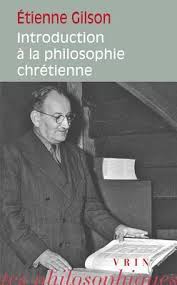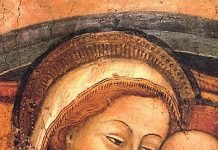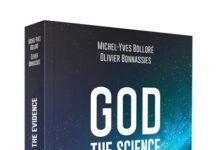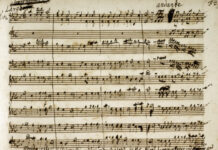The character of the Mad Hatter in Lewis Carroll’s Alice in Wonderland has its origin in the fact that in the 1800s hat makers used mercury nitrate in the transforming of animal furs into felt hats. Eventually it became observed that hat makers exhibited mental and physical instability. “Mad as a hatter” was an expression used by writers long before Lewis Carroll to denote people not playing with a full deck. The expression can also fairly be used to denote the condition of certain modern philosophies that fly in the face of rational metaphysics.
For anyone uncertain how to define metaphysics, it will be useful first to point out that metaphysics deals with issues that mathematics and science cannot resolve using their own methods. Such issues include ontology, epistemology, causality, etc. How we think about the existence of God and the soul, human destiny, free will, ethics, aesthetics, politics, etc. will flow naturally from asking questions about that reality which is beyond (meta) the material world (physics). A metaphysician asserts that such questions can yield fruitful answers. Only absolute skeptics doubt this. In the ancient world Plato and Aristotle are regarded as the ultimate metaphysicians. Metaphysics was appreciated and explored in theological circles during the Middle Ages. The Modern Era, however, is another story that needs to be told by someone who never was, as so many philosophers since Descartes have been, mad as a hatter.
A Sane Philosopher at Last
The one to tell that story was the highly esteemed French thinker Etienne Gilson (1884-1978), a Catholic historian of medieval philosophy as well as an original philosopher. Drafted into World War I, he fought and was wounded at the Battle of Verdun, suffered captivity for two years, and was awarded the Croix de Guerre for bravery on the battlefield. Having written his doctoral thesis on René Descartes, in later years he moved on to the thought of St. Thomas Aquinas, as a needed remedy for the follies of philosophy since Descartes. In 1946 he was elected an “Immortal” of the Académie française and subsequently was nominated for the Nobel Prize in Literature. Having taught for three years at Harvard University, he went on to help establish the Pontifical Institute of Mediaeval Studies in Toronto. Gilson and fellow Frenchman Jacques Maritain share the distinction of being the two pre-eminent champions of Thomas Aquinas in the 20th century.
Gilson’s writing style in some of his works can be very technical and difficult for the general reader. However, he can also be eloquently aphoristic, as the following quotes demonstrate. “Man is not a mind that thinks, but a being who knows other beings as true, who loves them as good, and who enjoys them as beautiful.” “To minds tormented by the divine thirst, it is useless to offer the most certain knowledge of the laws of numbers and the arrangement of the universe.” “Philosophy always buries its undertakers.” “Faith comes to intelligence as a light that overflows it with joy and inspires it with a certitude that does away with question.”
The Unity of Philosophical Experience
One of Gilson’s most inspired works is The Unity of Philosophical Experience (1937). In it he takes to task the pernicious effect of Descartes on modern philosophy. Maritain had already attacked Descartes in his Three Reformers: Luther, Descartes, Rousseau (1927). Gilson’s book is a more full-throated analysis of Descartes’ role in the cyclical pattern of philosophical errors that would dominate the history of philosophy well into our own time. Gilson begins by pointing to a habitual pattern of philosophical history, as the following narrative suggests.
First, some brilliant philosopher cuts out a new doctrine that solves an old problem. Then he develops a cult of followers. The originator of this doctrine does not follow through on the implications of his doctrine, some of which may be hazardous to the doctrine itself, but his followers are more bold and willing to explore them. Once the undesired implications cannot be explained away, sooner or later the doctrine and its followers fade into history. But a hundred years hence, another philosopher appears, one not well versed in the history of philosophy. He rediscovers the doctrine that has long ago been abandoned, and the entire history of the toxic doctrine and its champions runs yet another course. Thus, the dogmatism of the Middle Ages supplanted the rampant skepticism of the dying Roman Empire. Would that dogmatism in its turn be supplanted by a new era of skepticism?
Europe’s Descent into Skepticism
William of Ockham, a Franciscan monk of the 14th century, challenged the principle of causality inherited from Aristotle through the Medieval Schoolmen. The matter is too complicated to go into here, but Ockham’s Razor, deduced from his insights about causality, argues that no explanation should be offered for any phenomenon other than the simplest rational one. According to Gilson, whether he intended it or not, Ockham’s insight was instrumental in closing the door on medieval theological certainty (which relied heavily upon intricate and complex explanations) and opening the door to modern skepticism.
(In our own day this would find its parallel in the philosophical movement called “scientism.” Scientism never allows any explanation to include reference to God, because God is not of the natural order. To introduce God as an explanation for anything is to avoid the “simplest rational” explanation, which should be grounded in observations of nature alone. To introduce a metaphysical explanation for anything would be to violate the strictly conventional rules of science.)
Thus, throughout the 14th and 15th centuries, the only intellectual path that grew increasingly respectable was the one that set logic against mysticism. The dominance of theology gradually gave way to the ascent of philosophy; but philosophy could never be as sure of itself as theology had been, for it had no divine revelation to assure it of having arrived at truth. Inevitably for philosophy, the more it relied strictly upon reason, the more it would happen that different reasoners would reason differently, and so the multiplying of philosophers and their philosophies had to result in the fact that, more and more, reason began to see itself inevitably at war with itself. If philosophy triumphed over theology, was it a hollow victory?
By the 16th century the Rubicon had been crossed. The dogmatic theology of St. Thomas Aquinas, sustained by both reason and revelation, receded into the distance just when a kind of brute skepticism overcame Europe. Petrarch’s Confessions of His Own Ignorance and Nicolaus Cusanus’ treatise on Learned Ignorance signaled a complete rebellion against philosophy. Metaphysics was dead, Gilson notes; and though science was not yet fully born, it was on the horizon, for nature abhors a vacuum, most of all the vacuum of resignation to ignorance. Then, just as the 16th century closed, a young intellectual giant was born whose self appointed mission was to rescue philosophy from its downward spiral into skepticism.
Descartes Ascending
Before René Descartes (1596-1650) the most eminent skeptic of Europe was the French writer Michel de Montaigne (1533-1592) who regarded the dogmatic certainty of the Middle Ages with great disdain. That dogmatism, he was certain, produced the wars of the Reformation which Europe had recently suffered. Montaigne opined that dogmatists are so sure of what they think that they are willing to kill for their beliefs, or be killed, which is a curious way of proving an argument. His influence on the young Descartes was reflected in Descartes’ academic studies, which were imbued with Montaigne’s skepticism. Reflecting on his education, Descartes remarked: “I found myself embarrassed with so many doubts and errors that it seemed to me that the effort to instruct myself had no effect other than the increasing discovery of my own ignorance.” According to Gilson, Descartes came to believe that his mission was to ground wisdom in positive convictions rather than negative doubts.

As it turned out, during his academic studies it dawned upon Descartes that in at least in one realm of knowledge there was certainty: Mathematics. The geometry of ancient Euclid was as valid through the centuries as it was when it began. This was to become for him the antidote to the grinding and disheartening skepticism of Montaigne. Indeed, Descartes went so far as to conclude, as Gilson notes, “… that mathematical knowledge was the only knowledge worthy of the name.” Not only was it the only certain knowledge, it was the knowledge without which even the sciences were reduced to mere probability. Once infect the sciences with mathematical principles and they would flower with certainty. Moreover, Descartes realized that this special insight of his own would have to be the starting point of all future inquiries in his own work. As he stated in Rule #2 in his Rules for the Direction of the Mind, “… in accordance with the above maxim, we reject all such merely probable knowledge and make it a rule to trust only what is completely known and incapable of being doubted.”
Mathematical Metaphysics
But, Descartes asked himself, if such certainty could somehow be found in mathematics, why not also found in philosophy? If so, philosophy would have to have fundamental and intuitive propositions of certainty equivalent to the propositions (axioms and postulates) of geometry. As Gilson comments, “Descartes put his money on the actual existence of a set of intellectual intuitions, or pure ideas, quite independent of any empirical reality.” In essence, Descartes was proposing a mathematical metaphysics (based on intuitions similar to the intuitions of mathematics) that would unite all knowledge under a single theory of knowing. We have, for example, the intuition of perfection. Everyone has the innate sense of the possibility of perfection. That alone proves the existence of God, for there is nothing in nature that is perfect; so where did this intuition of perfection come from if not from the supernaturally Perfect Being who created us and planted the intuitive sense of Himself in us? Ergo: God exists. (Descartes’ proof, it seems, is logically consistent with St. Anselm’s ontological proof for the existence of God.) Using a similar argument based on intuition, Descartes believed he had mathematically (intuitively) demonstrated beyond doubt the immortality of the soul.
Unfortunately for Descartes’ theory that mathematics is at the bottom of all knowledge, including biological knowledge, Descartes discovered that his contemporary, William Harvey, had by the scientific method demonstrated that the heart pumps blood to the brain and the body. This proof was published in Harvey’s The Circulation of the Blood, but with no reliance at all upon mathematical logic. This was the first great blow to Descartes’ theory that was followed by other inadequate attempts to show that mathematics could be applied to all scientific knowledge. The only science that seemed tied into mathematics was physics, and Descartes never knew how perfectly Isaac Newton was to demonstrate that connection.
Descartes the Philosopher
Next Descartes turned his theory of the universal application of mathematics to the study of philosophy. He hoped to show that the properties of philosophy (in particular metaphysics) were similar to those of mathematics. The properties of mathematics were ideas, not things. For example, the perfect circle is an idea. But as a thing it does not exist. What are represented as circles on a piece of paper are only approximate circles, not perfect ones. But mathematics, geometry in particular, does begin with self-evident ideas, such as the idea that the shortest difference between two points must be a straight line. If this method of mathematics, starting as it does with such self- evident principles, is correct, then the same method should be applicable to metaphysics. What, Descartes asked, is the most fundamental, certain, and self-evident propositions to be found in philosophy?
Descartes did not seem to know that the one axiom above all others that he found to defeat the skepticism of Montaigne, was the one (differently articulated but virtually the same) that St. Augustine himself had used more than twelve centuries before him. Descartes chose the axiom Cogito; ergo sum (I think; therefore I am) as the starting point for all future metaphysics. It is certain that I think. One cannot doubt it without thinking, and therefore affirming it. The consequence of this thought is the act of being (Therefore I am.) From this axiom we can go on to the next one. Man is a thinking being. This also cannot be doubted without a man thinking to doubt it. Using this method, ad infinitum, a complete metaphysics will be discovered that puts the existence of certainty beyond doubt; and so Montaigne is defeated.
Descartes Descending
Descartes had discovered analytic geometry, which was the talk of all Europe. How could he be wrong with his other claims, even the ones that spoke of man’s essence as pure Mind over Matter? Gilson describes Descartes’ reasoning:
“If the thinking thing is conceived as radically distinct from the body, that substance, or mind, would be exactly what it is, and think as it does, even if there were no bodies in the world, either its own or any other one. Where then does that mind find its ideas? The necessary answer is: in itself, and nowhere else. There is in the mind a natural aptness to grasp by a direct intuition such ideas as represent true, eternal and unchangeable essences.”
But in the end Descartes would confront difficult opposition. The French empirical philosopher Pierre Gassendi posed a question that Descartes could not adequately answer. Descartes had insisted that mind and matter had nothing to do with each other since they were of different orders of being. Gassendi’s question was: “How will that which is corporeal seize upon that which is incorporeal, so to hold it conjoined with itself, or how will the incorporeal grasp the corporeal, so as reciprocally to keep it bound to itself?” To the question Descartes could give no reply. From the point of view of Gassendi, apparently, it was more logical to conclude that mind and matter were not opposites, but rather different modes of the same material reality, and that was how they could wrap themselves together in the same experiential reality. Gassendi had scored a vital point against Descartes, and soon after Descartes’ domination in the world of metaphysics came to an end.
The change was effectively triggered by the British philosopher John Locke in his book Essay Concerning Human Understanding. It seems that in England an opposite school was developing, one that repudiated the idealism of Descartes, one that was not intimidated by Descartes’ reputation as the genius of analytic geometry. Locke certainly was not a mathematician, yet, as Voltaire noted, he had the gift of logic that made him better at metaphysics than any mathematician trying to reduce all knowledge to innate ideas could be. There is, Locke said, nothing innate about ideas; all ideas are rooted in sensation and reflection. Once again, it seems, the old metaphysical contest between Plato and Aristotle was going to be played out.
Locke’s materialism very much opposed Descartes’ idealism. By the time Locke’s influence had spread through Europe, Descartes’ influence was undone. The great irony is that Descartes had put up such an unconvincing case for idealism, and Locke had put up such a strong case for materialism, that it was really Descartes’ poor reasoning and his attempt to correct the errors of medieval Scholasticism that finally led to the triumph of Locke and the materialists. That great cynic Voltaire was delighted that both Scholastic and Cartesian philosophies had seemingly ended on the scrap heap of history. But Voltaire, who at least believed in a Deity, had no way of knowing how smooth a path Locke had made for the galloping rise of Mechanism and its twin brother: Atheism.
The Rise of David Hume
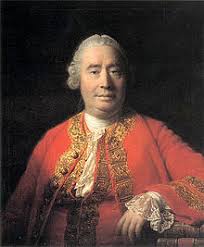
If the human mind is really not a governing spirit, but a cog in the human machine, then humans are really not free spirits; rather, they are governed by the laws of mechanics. If Locke was the grandfather of modern materialism, David Hume was the father. Echoing Montaigne, Hume restored the spread of skepticism concerning religion, and threw in a dose of atheism for good measure. Once again metaphysics would be under fire, and Hume would be its assassin. He began by attacking the metaphysical principle of causality. The followers of Descartes had argued that causality (the power of one thing to effect another thing) originated in God, since there was no other observable way to account for why objects engage each other in cause-and-effect ways. For Hume this was a non sequitur fallacy. Reversing the argument, Hume asked how it was possible to find the principle of causality rooted in God when it could not be found in material beings. For Hume cause-and-effect were merely ideas, ideas that are habitually imposed on the observation of events. Cause and effect do not exist in the actual world, but only in the mind. By this master stroke of logic, Hume reduced cause-and-effect to a psychological event, and by doing so called into doubt whether all other knowledge is likewise merely subjective. Montaigne’s cynicism is thus revived, and even Hume is horrified by his own deductions when he says: “… all our reasoning concerning causes and effects are derived from nothing but custom …. I am … afrightened and confounded with that forlorn solitude in which I am placed in my philosophy.” It would require yet another intellectual giant to appear and address Hume’s subjective skepticism. He was not long in coming.
Kant’s Dilemma
Immanuel Kant read Hume’s argument against causality and felt the full downward pull toward intellectual despair. Aristotelian causality, which had been the linchpin of metaphysical doctrines, once brought into disrepute, made the rest of metaphysics devastatingly suspect. As Gilson remarks: “What Kant had to face was a generalized despair of metaphysical knowledge; he had not to stage a revolution; he found one, and to limit the losses was the shortest way to bring it to an end.” But how? Having despaired of saving metaphysics, Kant turned to the astonishing rise of science in the person of Isaac Newton and others. Newton had joined mathematics not with metaphysics, but with physics, and his accomplishment was hardly less than a miracle of thought. Newton had shifted the ground of everyone’s interest toward science by showing that whereas metaphysics could only speculate, physics required physical demonstration of its proofs. Certainty was restored, at least as long as science critiqued itself sufficiently to remove doubt and skepticism about its results. (Had Kant lived in the twentieth century he might not have been so confident about the certainties of scientific discoveries which are constantly revised in every generation.)

Having divorced mathematics from metaphysics, Kant still hoped to apply something like a scientific method to metaphysical questions. In 1763 he wrote a book titled Inquiry Concerning the Clearness of Principles in Natural Theology and Ethics. Here he tried to restore confidence that certain metaphysical questions could be asked and answered with a modicum of certainty. According to Gilson, it took at least a decade for Kant to realize that this was a hopeless quest. In his Critique of Pure Reason (1781) Kant finally admitted that the methods of Newton’s physics could not be aped in metaphysics (again, physics requires mathematics, which can hardly be applied to metaphysics, dealing as mathematics does with quantitative rather than qualitative matters.
Kant was reluctant to let Descartes’ dream (of mathematical metaphysics) sneak in by the back door, yet he was more reluctant to allow metaphysics to sink back into the fog of annihilating skepticism Hume had imposed on it. Therefore, he followed the Critique of Pure Reason with the Critique of Practical Reason. This latter effort was designed to restore the dignity of metaphysics by establishing through practical reason the necessity of dealing with matters (morality paramount among them) that neither science nor mathematics could touch. Morality could be the touchstone by which to resurrect the dignity of metaphysics. Kant even used the practical necessity of morals to point to the existence of God and the immortality of the soul, an inference that would have appalled Hume.
Morality rises out of our human nature and cannot be avoided without doing wrong to ourselves and to others. Thus, the need for morality was enlisted to resolve many of the issues once assigned to reason alone. Moreover, the practical need of morality did not need to be justified by logic, but only by self-evident and direct intuition such as we find in mathematics. This insight about the practical need for morality Kant called the Categorical Imperative. Now we begin to detect a pattern of rank confusion developing through several generations of philosophers culminating in the works of Kant. Gilson’s assessment was apparently agreed to by Jacques Maritain when, one afternoon after reading a volume of Kant, he is reported to have complained to his wife of a severe headache.
Auguste Comte and Sociology
Following the cultural disaster of all the philosophical movements working against classical metaphysics, plus the political turmoil attendant to the French Revolution and its aftermath, civilization waited once again for the fresh winds that produce cultural unity to blow across the world. August Comte (1798-1857) arrived and gave the world no reason to suspect that classical metaphysics was due for a revival. Rather, he analyzed the history of civilizations (he was perhaps the first great sociologist) and argued that they evolve through three fundamental phases: first the religious phase; then the rise of philosophy critical of religion; and finally the triumph of science. All of this process, according to Comte, shows logical positive progress (indeed, his school of philosophy came to be known as Logical Positivism). It is clear, according to Gilson’s assessment of Comte, that metaphysics “is but the ghost of dead theologies.” All future knowledge worthy of the name will flow out of science, Comte announced. And which science would be the logical successor of metaphysics? Sociology, of course!
The decline of religion left a gaping hole in the human psyche that could not be filled up by the physical sciences, which tell us a great deal about how the universe works, but tells us very little if anything about why it works, or why it even exists. Comte believed a new paradigm would be needed to bring meaningful unity among humans and provide answers to age-old questions that will not go away. This new science, sociology, would explain to us in due time how we are to organize humanity into a collective world view that satisfies all humans and overcomes the pathetic and quarreling political and class sects that dominate the present world.
As Gilson puts it, Comte wanted to achieve a magnificent result: “By taking politics out of its metaphysical and chaotic state and turning it into a positive science, he would initiate an era of social and political engineering.” In other words, people and the way they behave would become the subject of his new science. If the behaviour of people could be rightly managed, a new cultural unity would emerge comparable to, or rather superior to, the cultural unity of the Middle Ages achieved by Catholicism. But, Gilson notes, the more he thought about it, the more Comte realized that if a society “has nothing to live by except science and its disconnected laws, society will inevitably find itself condemned to a state of complete disintegration; in fact, it will not be a society at all.” Hence, Comte was driven to realize that if religion must go, philosophy at least must stay. The scientists must develop a philosophy that makes science the be-all and end-all of our existence, a philosophy that meaningfully addresses our personal and social needs.
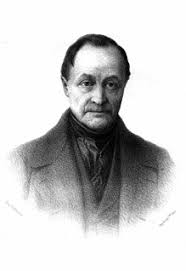
But now Comte had violated the canons of science by supposing that anything so subjective as the behaviors of groups of people or a whole society could be subjected to the rules of scientific inquiry. Science was not concerned with anything but the physical laws of nature. There was no option left but for Comte to decide, as Kant had, that morality must be restored as a guiding principle behind Logical Positivism. Feeling must be elevated above intellect, and most of all the feeling called love (was Comte becoming a closet Christian?) Comte was finally obliged to admit: “We tire of thinking and even of acting; we never tire of loving.” Having made love the centerpiece of sociology, he had to twist his logic like a pretzel to invent the “science of loving.” Though he regarded all the older religious establishments as outdated and irrelevant to his mission, he proceeded to establish his own orthodoxy and priesthood of followers, claiming himself as virtual pope, and announcing Humanity itself, not God, to be the object of universal worship. No wonder he bowed so graciously to those greatly influential atheists, Hume and Diderot. By helping to slay Judaism and Christianity, they had done much to enable the birth of a new and grand religion with Comte as its prophet and savior of struggling humanity.
Modern Philosophy’s Nervous Breakdown
In 1918, within sixty years of Comte’s death, Oswald Spengler wrote The Decline of the West. The general suspicion that the West really was in decline (spurred on by World War I) was a sign that whatever Comte hoped to achieve, he certainly did not achieve it. According to Gilson, “Comte failed to provide Europe with a living dogma; his new scientific religion was still-born, and he died a self-appointed pope with very few disciples.” The heritage of metaphysics from Greece, preserved and integrated into the Christian world view since the 13th century by Aquinas and others, now seemed to be transformed, with the help of the Protestant Reformation, into a chaos of cynical and godless philosophies that were going to perish, many of them within the lifetime of their founders. The center did not hold, and the West was spinning out of control with little but galloping science and technology to give it coherence and direction. Thirty years after Spengler’s Decline of the West, science had produced atomic bombs. The people who urged the making of these weapons, including Einstein, never seemed to have asked themselves the ultimate of metaphysical questions: “Do we really want to do this?” If they did ask it, the answer they gave suggests they had surrendered to the rightness of brute force and the willingness to risk the possible annihilation of humanity itself.
By the end of World War I and Russia’s Communist Revolution, the dark clouds of atheism had gathered like a storm over Europe. The major philosophers of the era could not get enough of disparaging religion, and (led by Feuerbach and Nietzsche) announced that man had created his gods in his own image. Karl Marx had made atheism the official religion of his Communist Manifesto. The Russians were content to adopt him as their prophet and savior. The parallels between Marx and Darwin were fairly obvious. Both had provided grounds among their followers for supposing that the natural order is all there is, so the human race had better make the most of it. The only heaven that exists is whatever heaven can be found on earth. Little did they suspect that their theories might just as likely beat a wider pathway to hell on earth than to heaven; for a Godless philosophy can be used by men to make themselves into gods or, perhaps more probably, into devils.
Gilson laments the fact that “… since the second half of the 19th century there have never been as many philosophers and professors of philosophy writing books and articles about all possible questions. Yet, in spite of that tremendous philosophical inflation … independent philosophy has failed to produce a single constructive philosophy, which could act as a rule of public order and private morality.” All this, then, is the legacy of Hume’s skepticism and attack on Descartes’ failed approach to metaphysics. Ironically, Hume’s comrade atheist descendant, Vladimir Lenin, himself repudiated Hume’s skepticism and championed the return of a dogmatism that would rival any dogmatism in the history of the human race. But Lenin could not know that within seventy years the godless dogmatic Communist empire he sought to build would ignominiously collapse without a bullet fired. Left behind, as if dwelling in humble shadows, was the single enduring empire of dogmatism still intact after two thousand years: indeed, the Church of Rome staggers on, forever ambushed by legions of relativists and foes, both without and within her walls, resolved that she too should perish.
One may partly account for the baffling maze of anti-metaphysical philosophies through recent centuries by noting that the pendulum of history indicates cycles that repeat themselves clockwise every twelfth hour. But this does not justify those thinkers out to make a name for themselves by smashing ancient truths only to replace them with ancient fallacies. Metaphysics, it would seem, is long overdue for its auspicious return. More modern philosophers of our time such as Dietrich von Hildebrand, Charles Taylor and Jean-Luc Marion have labored valiantly to restore metaphysics, and more importantly theology, to their proper thrones. As Gilson said of those who would drag the world into the demoralizing wastelands of agnostic materialism: “Let the dead bury the dead, and let us turn ourselves toward the future, for it will be what we shall make it: either an aimlessly drifting wreck, or a ship holding a steady course with a rational animal at the wheel.”

